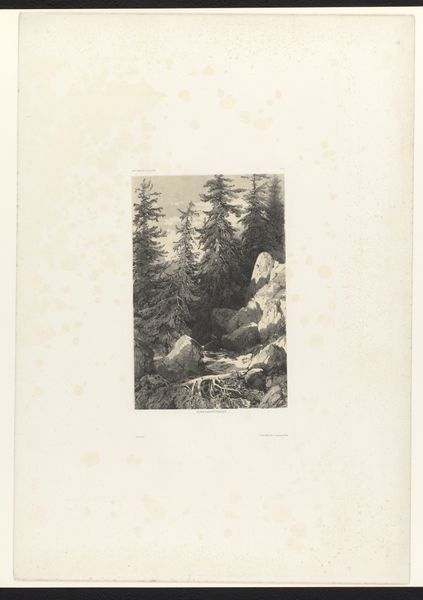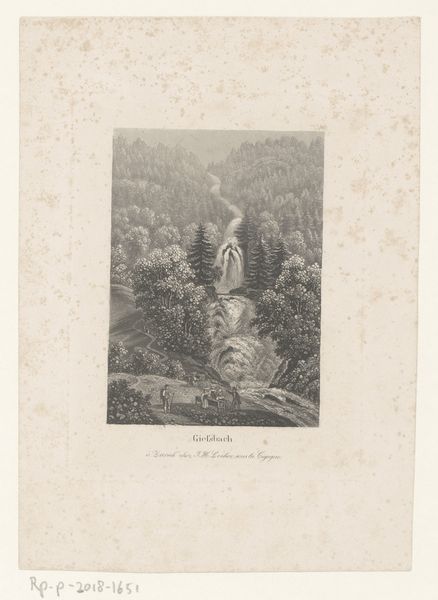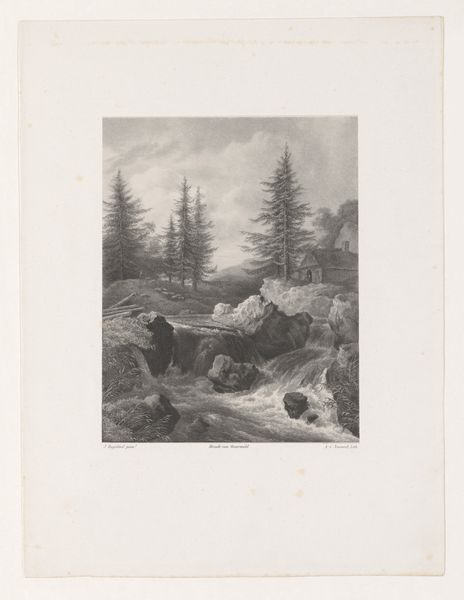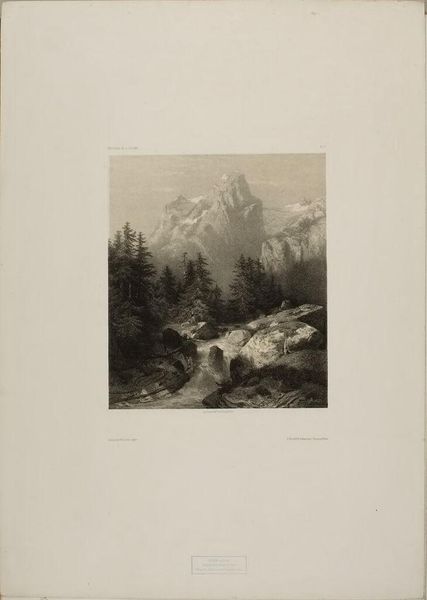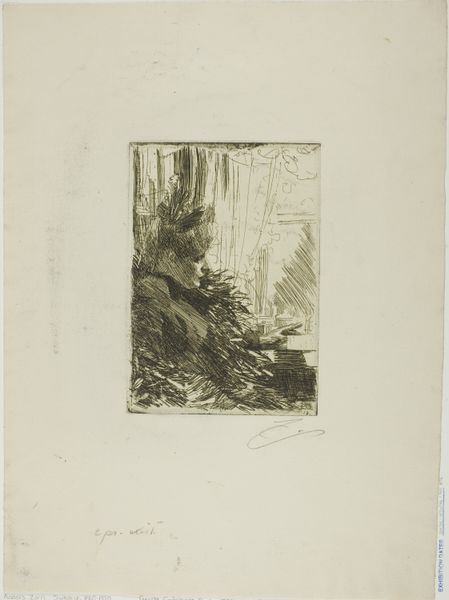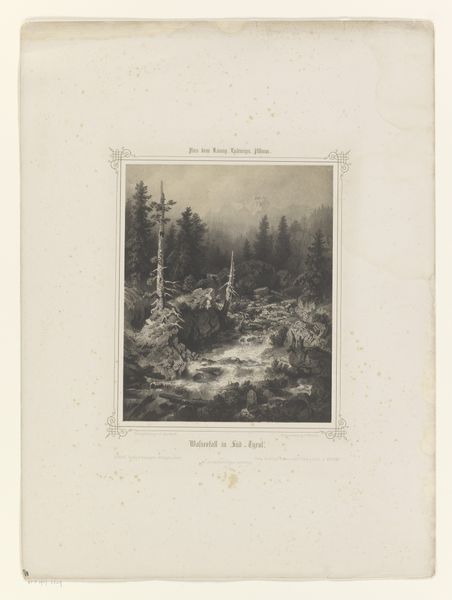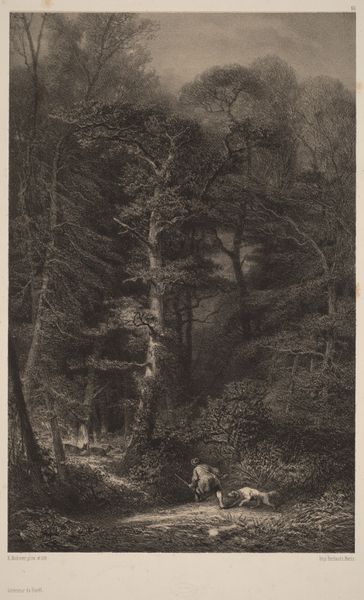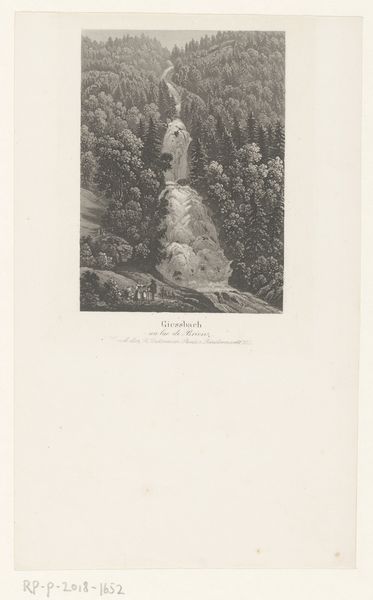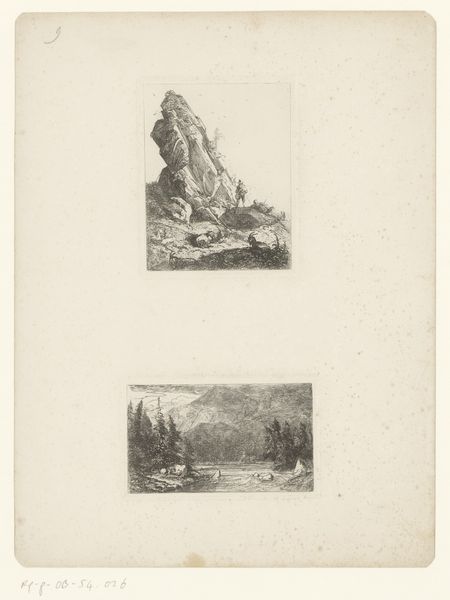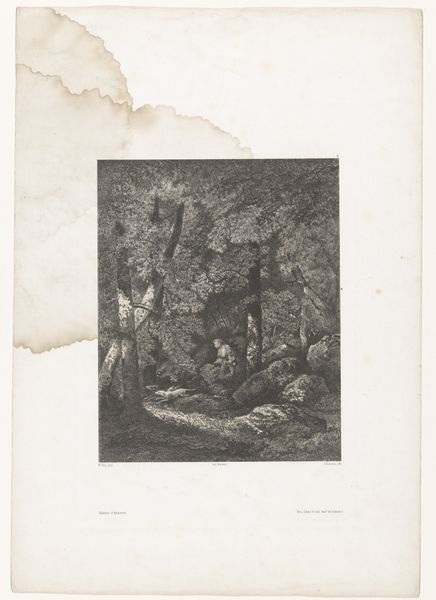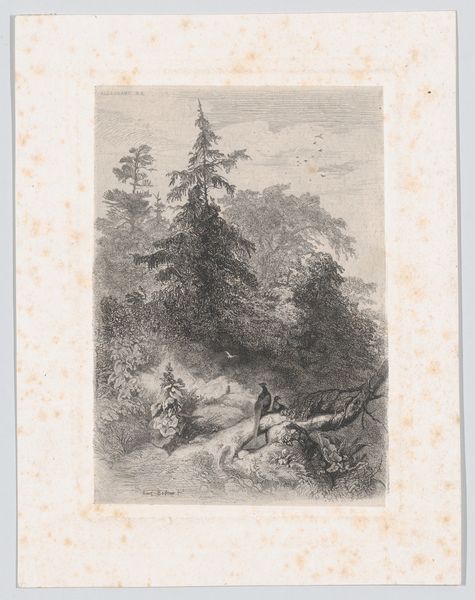
Copyright: CC0 1.0
Curator: We’re looking at Alexandre Calame’s "Landscapes Number 2," housed here at the Harvard Art Museums. Editor: It feels austere, almost severe. The sharp angles of the rocks contrast with the spiky evergreens. I wonder what kind of labor went into creating such a detailed print. Curator: Calame was part of a broader movement romanticizing the landscape, particularly in the face of industrialization. His work served a cultural need, representing the sublime power of nature. Editor: But who had access to these images? Prints made it possible for more people to consume these landscapes, not just the wealthy who could afford paintings. Consider the paper, the ink, the printing process itself—a whole network of production and consumption. Curator: Exactly! Prints democratized art, making it accessible to a wider audience and shaping popular perceptions of nature. Calame played a significant role in defining the visual language of the Alps. Editor: Still, the starkness gets me. There's something unsettling in this depiction of nature, a reminder of its indifference. Curator: Perhaps it reflects the anxieties of a rapidly changing society, grappling with its place in the natural world. Editor: It’s clear that even a landscape like this is never just nature; it's a product of its time.
Comments
No comments
Be the first to comment and join the conversation on the ultimate creative platform.
